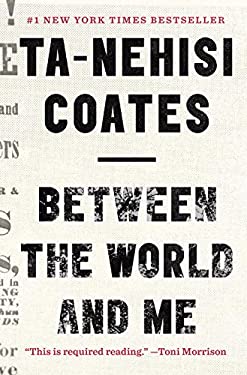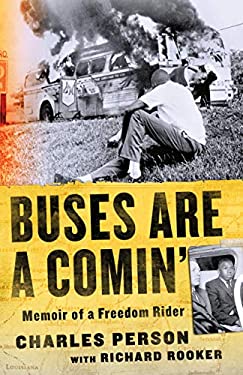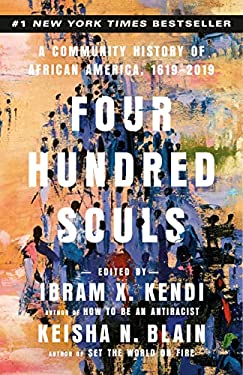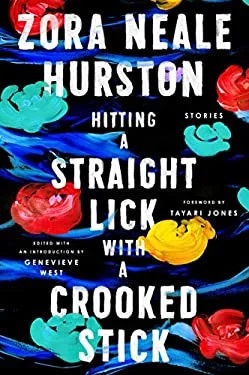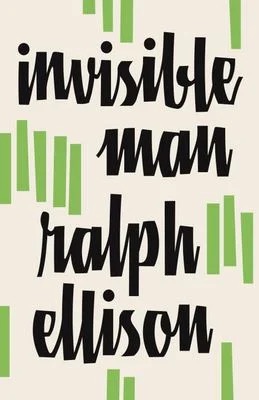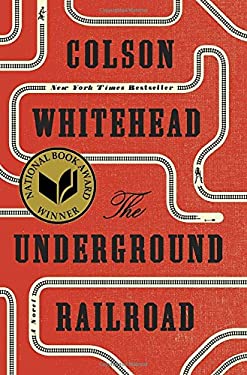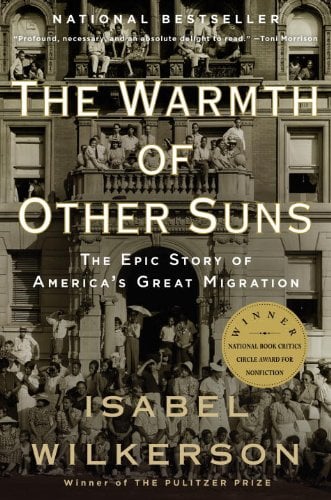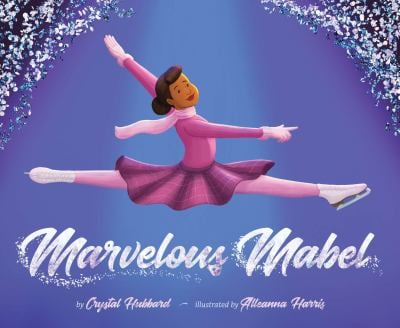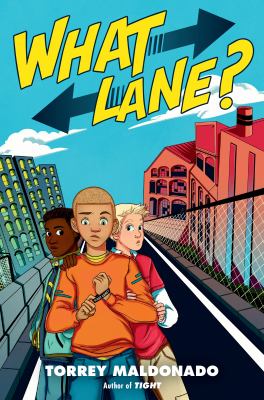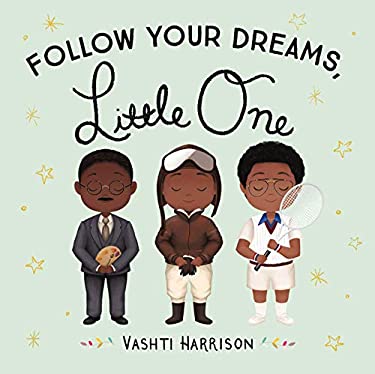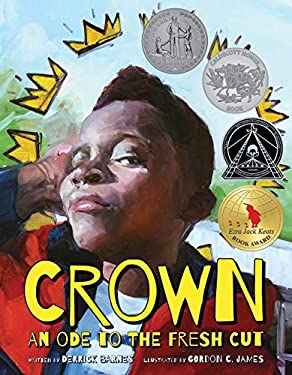February first marks the beginning of Black History Month and the theme for 2023 is Black Resistance. We’ve created a list of titles, from memoirs to children’s books, to inspire your reading for Black History Month. What titles would add to these recommendations? Visit the full category of recommended reads at the link below.
.
Between the World and Me
by Ta-Nehisi Coates
Americans have built an empire on the idea of “race,” a falsehood that damages us all but falls most heavily on the bodies of black women and men–bodies exploited through slavery and segregation, and, today, threatened, locked up, and murdered out of all proportion. What is it like to inhabit a black body and find a way to live within it? And how can we all honestly reckon with this fraught history and free ourselves from its burden? Between the World and Me is Ta-Nehisi Coates’s attempt to answer these questions in a letter to his adolescent son. Coates shares with his son–and readers–the story of his awakening to the truth about his place in the world through a series of revelatory experiences, from Howard University to Civil War battlefields, from the South Side of Chicago to Paris, from his childhood home to the living rooms of mothers whose children’s lives were taken as American plunder.
.
Black Fortunes: The Story of the First Six African Americans Who Survived Slavery and Became Millionaires
by Shomari Wills
Immediately following Emancipation, there were 4,047 millionaires in the United States-and six of them were African American. Between 1830 and 1927, as the last generation of blacks born into slavery was reaching maturity, a small group of industrious, tenacious, and daring men and women broke new ground to attain the highest levels of financial success. Mary Ellen Pleasant used her Gold Rushwealth to further the cause of abolitionist John Brown. Robert Reed Church became the largest landowner in Tennessee. Hannah Elias, the mistress of a New York City millionaire, used the property her lover gave her to build an empire in Harlem. Orphan and self-taught chemist Annie Turnbo Malone developed the first national brand of hair care products. Mississippi schoolteacher O. W. Gurley developed a piece of Tulsa, Oklahoma, into a “town” for wealthy black professionals and craftsmen that would become known as “Black Wall Street.”
.
Buses Are A Comin’: Memoir of a Freedom Rider
by Charles Person with Richard Rooker
At 18, Charles Person was the youngest of the original Freedom Riders, key figures in the U.S. Civil Rights Movement who left Washington, D.C. by bus in 1961, headed for New Orleans. This purposeful mix of black and white, male and female activists–including future Congressman John Lewis, Congress of Racial Equality Director James Farmer, Reverend Benjamin Elton Cox, journalist and pacifist James Peck, and CORE field secretary Genevieve Hughes–set out to discover whether America would abide by a Supreme Court decision that ruled segregation unconstitutional in bus depots, waiting areas, restaurants, and restrooms nationwide. Two buses proceeded through Virginia, North and South Carolina, to Georgia where they were greeted by Dr. Martin Luther King Jr., and finally to Alabama. There, the Freedom Riders found their answer: No. One bus was burned to a shell, its riders narrowly escaping; the second, which Charles rode, was set upon by a mob that beat several riders nearly to death. Buses Are a Comin’ provides a front-row view of the struggle to belong in America, as Charles Person accompanies his colleagues off the bus, into the station, into the mob, and into history to help defeat segregation’s violent grip on African American lives.
.
Four Hundred Souls: A Community History of African America, 1619-2019
edited by Ibram X. Kendi & Keisha N. Blain
The editors, Ibram X. Kendi and Keisha N. Blain, have assembled ninety brilliant writers, each of whom takes on a five-year period of that four-hundred-year span. The writers explore their periods through a variety of techniques: historical essays, short stories, personal vignettes, and fiery polemics. They approach history from various perspectives: through the eyes of towering historical icons or the untold stories of ordinary people; through places, laws, and objects. While themes of resistance and struggle, of hope and reinvention, course through the book, this collection of diverse pieces from ninety different minds, reflecting ninety different perspectives, fundamentally deconstructs the idea that Africans in America are a monolith–instead it unlocks the startling range of experiences and ideas that have always existed within the community of Blackness. This is a history that illuminates our past and gives us new ways of thinking about our future, written by the most vital and essential voices of our present.
.
Hitting a Straight Lick with a Crooked Stick: Stories from the Harlem Renaissance
by Zora Neale Hurston
In 1925, Barnard student Zora Neale Hurston–the sole black student at the college–was living in New York, “desperately striving for a toe-hold on the world.” During this period, she began writing short works that captured the zeitgeist of African American life and transformed her into one of the central figures of the Harlem Renaissance. Nearly a century later, this singular talent is recognized as one of the most influential and revered American artists of the modern period. Hitting a Straight Lick with a Crooked Stick is an outstanding collection of stories about love and migration, gender and class, racism and sexism that proudly reflect African American folk culture. Brought together for the first time in one volume, they include eight of Hurston’s “lost” Harlem stories, which were found in forgotten periodicals and archives. These stories challenge conceptions of Hurston as an author of rural fiction and include gems that flash with her biting, satiric humor, as well as more serious tales reflective of the cultural currents of Hurston’s world. All are timeless classics that enrich our understanding and appreciation of this exceptional writer’s voice and her contributions to America’s literary traditions.
.
How the Word Is Passed: A Reckoning with the History of Slavery Across America
by Clint Smith
Beginning in his hometown of New Orleans, Clint Smith leads the reader on an unforgettable tour of monuments and landmarks–those that are honest about the past and those that are not–that offer an intergenerational story of how slavery has been central in shaping our nation’s collective history, and ourselves. It is the story of the Monticello Plantation in Virginia, the estate where Thomas Jefferson wrote letters espousing the urgent need for liberty while enslaving more than four hundred people. It is the story of the Whitney Plantation, one of the only former plantations devoted to preserving the experience of the enslaved people whose lives and work sustained it. It is the story of Angola, a former plantation-turned-maximum-security prison in Louisiana that is filled with Black men who work across the 18,000-acre land for virtually no pay. And it is the story of Blandford Cemetery, the final resting place of tens of thousands of Confederate soldiers. A deeply researched and transporting exploration of the legacy of slavery and its imprint on centuries of American history, How the Word Is Passed illustrates how some of our country’s most essential stories are hidden in plain view–whether in places we might drive by on our way to work, holidays such as Juneteenth, or entire neighborhoods like downtown Manhattan, where the brutal history of the trade in enslaved men, women, and children has been deeply imprinted.
.
I Know Why the Caged Bird Sings
by Maya Angelou
Sent by their mother to their devout, self-sufficient grandmother in a small Southern town, Maya and her brother, Bailey, endure the ache of abandonment and the prejudice of the local “powhitetrash.” When she journeys at eight to her mother’s side in St. Louis, she is attacked by a man many times her age. Years later, in San Francisco, she learns about love for herself-and has to live with the consequences for a lifetime. The kindness of others, Maya’s own strong spirit, and the ideas of great authors (“I met and fell in love with William Shakespeare”) will allow her to be free instead of imprisoned.
.
Invisible Man is a milestone in American literature, a book that has continued to engage readers since its appearance in 1952. A first novel by an unknown writer, it remained on the bestseller list for sixteen weeks, won the National Book Award for fiction, and established Ralph Ellison as one of the key writers of the century. The nameless narrator of the novel describes growing up in a black community in the South, attending a Negro college from which he is expelled, moving to New York and becoming the chief spokesman of the Harlem branch of “the Brotherhood,” and retreating amid violence and confusion to the basement lair of the Invisible Man he imagines himself to be.
.
The Fire Next Time
by James Baldwin
A national bestseller when it first appeared in 1963, The Fire Next Time galvanized the nation and gave passionate voice to the emerging civil rights movement. At once a powerful evocation of James Baldwin’s early life in Harlem and a disturbing examination of the consequences of racial injustice, the book is an intensely personal and provocative document. It consists of two “letters,” written on the occasion of the centennial of the Emancipation Proclamation, that exhort Americans, both black and white, to attack the terrible legacy of racism.
.
The Underground Railroad: A Novel
by Colson Whitehead
Cora is a slave on a cotton plantation in Georgia. Life is hell for all the slaves, but especially bad for Cora; an outcast even among her fellow Africans, she is coming into womanhood where even greater pain awaits. When Caesar, a recent arrival from Virginia, tells her about the Underground Railroad, they decide to take a terrifying risk and escape. Matters do not go as planned Cora kills a young white boy who tries to capture her. Though they manage to find a station and head north, they are being hunted. In Whitehead s ingenious conception, the Underground Railroad is no mere metaphor engineers and conductors operate a secret network of tracks and tunnels beneath the Southern soil. Cora and Caesar s first stop is South Carolina, in a city that initially seems like a haven. But the city s placid surface masks an insidious scheme designed for its black denizens. And even worse: Ridgeway, the relentless slave catcher, is close on their heels. Forced to flee again, Cora embarks on a harrowing flight, state by state, seeking true freedom.
.
The Warmth of Other Suns: The Epic Story of America’s Great Migration
by Isabel Wilkerson
In this epic, beautifully written masterwork, Pulitzer Prize-winning author Isabel Wilkerson chronicles one of the great untold stories of American history: the decades-long migration of black citizens who fled the South for northern and western cities, in search of a better life. From 1915 to 1970, this exodus of almost six million people changed the face of America. Wilkerson compares this epic migration to the migrations of other peoples in history. She interviewed more than a thousand people, and gained access to new data and official records, to write this definitive and vividly dramatic account of how these American journeys unfolded, altering our cities, our country, and ourselves. With stunning historical detail, Wilkerson tells this story through the lives of three unique individuals: Ida Mae Gladney, who in 1937 left sharecropping and prejudice in Mississippi for Chicago, where she achieved quiet blue-collar success and, in old age, voted for Barack Obama when he ran for an Illinois Senate seat; sharp and quick-tempered George Starling, who in 1945 fled Florida for Harlem, where he endangered his job fighting for civil rights, saw his family fall, and finally found peace in God; and Robert Foster, who left Louisiana in 1953 to pursue a medical career, the personal physician to Ray Charles as part of a glitteringly successful medical career, which allowed him to purchase a grand home where he often threw exuberant parties.
.
FOR YOUNG READERS
.
Marvelous Mabel : Figure Skating Superstar
by Crystal Hubbard
illustrated by Alleanna Harris
Meet Mabel Fairbanks, the skating superstar who became the first Black athlete inducted into the US Figure Skating Hall of Fame. After watching ice skaters glide and spin at a rink in Central Park, Mabel Fairbanks was determined to learn to skate. But in the 1930s, many places didn’t allow Black skaters on the ice, so Mabel practiced on a homemade rink in her bedroom! There she learned how to perform sharp turns and whizzing spins of her own creation. It wasn’t long before Mabel needed more room to practice skating, and she returned to one of the rinks that denied her entrance. This time she refused to take no for an answer. She knew that if they just let her on the ice, she would be the most marvelous skater anyone had ever seen. And she was right, as her trailblazing talent continues to influence the sport today. Written and illustrated with warmth and spirit, this is the true story of how Mabel Fairbanks’s determination and grit led her to become America’s first Black skating superstar.
.
STAY IN YOUR LANE. Stephen doesn’t want to hear that–he wants to have no lane. Anything his friends can do, Stephen should be able to do too, right? So when they dare each other to sneak into an abandoned building, he doesn’t think it’s his lane, but he goes. Here’s the thing, though: Can he do everything his friends can? Lately, he’s not so sure. As a mixed kid, he feels like he’s living in two worlds with different rules–and he’s been noticing that strangers treat him differently than his white friends . . . So what’ll he do? Hold on tight as Stephen swerves in and out of lanes to find out which are his–and who should be with him.
.
Little Leaders: Bold Women in Black History
by Vashti Harrison
Based on her popular Instagram posts, debut author-illustrator Harrison shares the stories of 40 bold African-American women who shaped history and changed the world.
.
Follow Your Dreams, Little One
by Vashti Harrison
This beautifully illustrated board book highlights true stories of black men in history. The exceptional men featured include artist Aaron Douglas, civil rights leader John Lewis, dancer Alvin Ailey, lawman Bass Reeves, tennis champion Arthur Ashe, and writer James Baldwin. The legends in this book span centuries and continents, but what they have in common is that each one has blazed a trail for generations to come.
.
Crown: An Ode to the Fresh Cut
by Derrick Barnes
illustrated by Gordon C. James
Barnes’ smooth, fresh words and James’ lush, vibrant illustrations capture the confidence, pride, and magic black and brown boys feel the moment they get a new haircut and admire their own beautiful reflections in the mirror.
.

